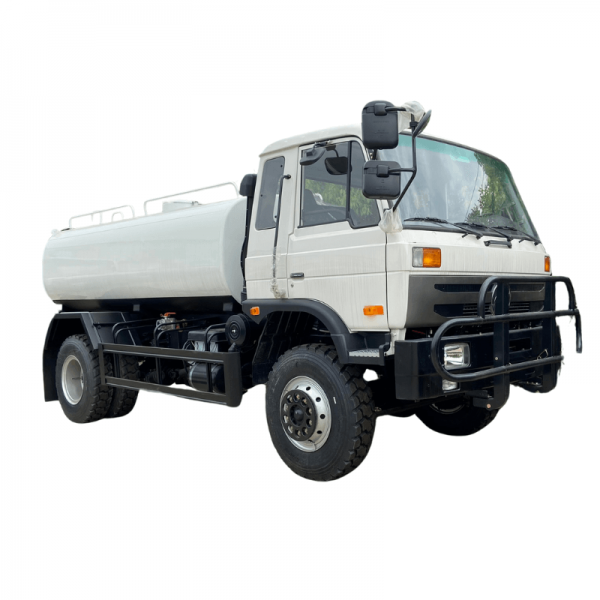Enhancing Water Logistics with Water Tank Trucks

Introduction
Water tank trucks play a crucial role in the efficient transportation and distribution of water for various purposes. With the increasing demands for water in urban areas, industries, agriculture, and emergency situations, the logistics of water delivery have become more critical than ever. In this article, we will explore the significance of water tank trucks in water logistics, their operation, challenges, and ways to enhance their efficiency.
Importance of Water Tank Trucks in Water Logistics
Water tank trucks are specialized vehicles designed to transport large quantities of water from one location to another. They are commonly used in areas where access to clean water is limited or during emergencies such as natural disasters. The versatility of water tank trucks allows them to serve a wide range of purposes, including:
1. Water Supply to Remote Areas: In rural or remote areas where access to clean water is limited, water tank trucks play a vital role in delivering water to communities, schools, and healthcare facilities.
2. Construction and Industrial Use: Water tank trucks are essential in construction sites and industries where water is needed for various purposes such as dust suppression, concrete mixing, and equipment cooling.
3. Agriculture: Farmers rely on water tank trucks for irrigation purposes, especially in areas where water sources are scarce or unreliable.
4. Refuse compactor truck design : During natural disasters such as floods, hurricanes, or wildfires, water tank trucks are deployed to provide drinking water to affected communities and support firefighting efforts.
Operation of Water Tank Trucks
Water tank trucks are equipped with a large tank, typically made of stainless steel or fiberglass, that can hold varying capacities of water depending on the size of the truck. The operation of water tank trucks involves several key components and processes:
1. Loading: Water is typically loaded into the tank through a top fill hatch using a hose connected to a water source such as a hydrant or a natural water body.
2. Transportation: Once the tank is filled, the water tank truck transports the water to the designated location using public roads or off-road routes, depending on the terrain and accessibility.

3. Unloading: Upon reaching the destination, the water tank truck uses a rear-mounted pump or gravity to unload the water into storage tanks, reservoirs, or directly into designated containers.
4. Cleaning and Maintenance: Regular cleaning and maintenance of water tank trucks are essential to ensure the quality and safety of the water being transported. This includes disinfection of the tank, inspection of valves and hoses, and checking for leaks or damages.
Challenges in Water Logistics Using Water Tank Trucks
While water tank trucks are invaluable in water logistics, they also face several challenges that can impact their efficiency and effectiveness:
1. Limited Capacity: The capacity of water tank trucks is finite, which can be a limitation when large quantities of water need to be transported over long distances or to multiple locations.
2. Accessibility Issues: In rugged terrains or areas with poor road infrastructure, water tank trucks may face challenges in reaching certain locations, leading to delays in water delivery.
3. Water Quality Concerns: Ensuring the quality of water during transportation is crucial to prevent contamination or spoilage. Proper cleaning and maintenance procedures are essential but can be time-consuming and costly.
4. Operational Costs: Running and maintaining water tank trucks can be expensive, including fuel costs, maintenance, insurance, and driver salaries. Balancing these costs while providing affordable water delivery services can be a challenge for water logistics companies.
Enhancing Water Logistics with Water Tank Trucks
To overcome the challenges and enhance the efficiency of water logistics using water tank trucks, several strategies can be implemented:
1. Fleet Optimization: Water logistics companies can optimize their fleet of water tank trucks by deploying vehicles of different capacities based on the specific requirements of each task. This allows for more efficient use of resources and better allocation of trucks to different locations.
2. Route Planning and Tracking: Utilizing advanced route planning software and GPS tracking systems can help optimize delivery routes, reduce travel time, and improve overall efficiency. Real-time tracking also enables better coordination and communication between drivers and dispatchers.
3. Water Treatment Technologies: Implementing water treatment technologies such as filtration systems or UV disinfection units within water tank trucks can help maintain water quality during transportation. This ensures that the water remains safe for consumption or use upon delivery.
4. Training and Certification: Providing training to drivers and operators on proper handling, maintenance, and safety protocols for water tank trucks is essential to ensure compliance with regulations and industry standards. Certification programs can also help maintain a skilled workforce and uphold quality standards.
5. Collaborations and Partnerships: Collaborating with local authorities, non-profit organizations, or other stakeholders can help streamline water logistics operations, especially during emergencies or crisis situations. Partnerships can also lead to resource sharing, cost savings, and improved response times.
Conclusion
Water tank trucks are indispensable assets in water logistics, serving a wide range of purposes from supplying remote areas with clean water to supporting emergency response efforts. By addressing the challenges faced in water logistics and implementing strategies to enhance efficiency, water logistics companies can improve their service delivery, reduce costs, and ensure the availability of safe and reliable water supplies. As the demand for water continues to grow, the role of water tank trucks in water logistics will remain essential in meeting the needs of communities, industries, and the environment.
